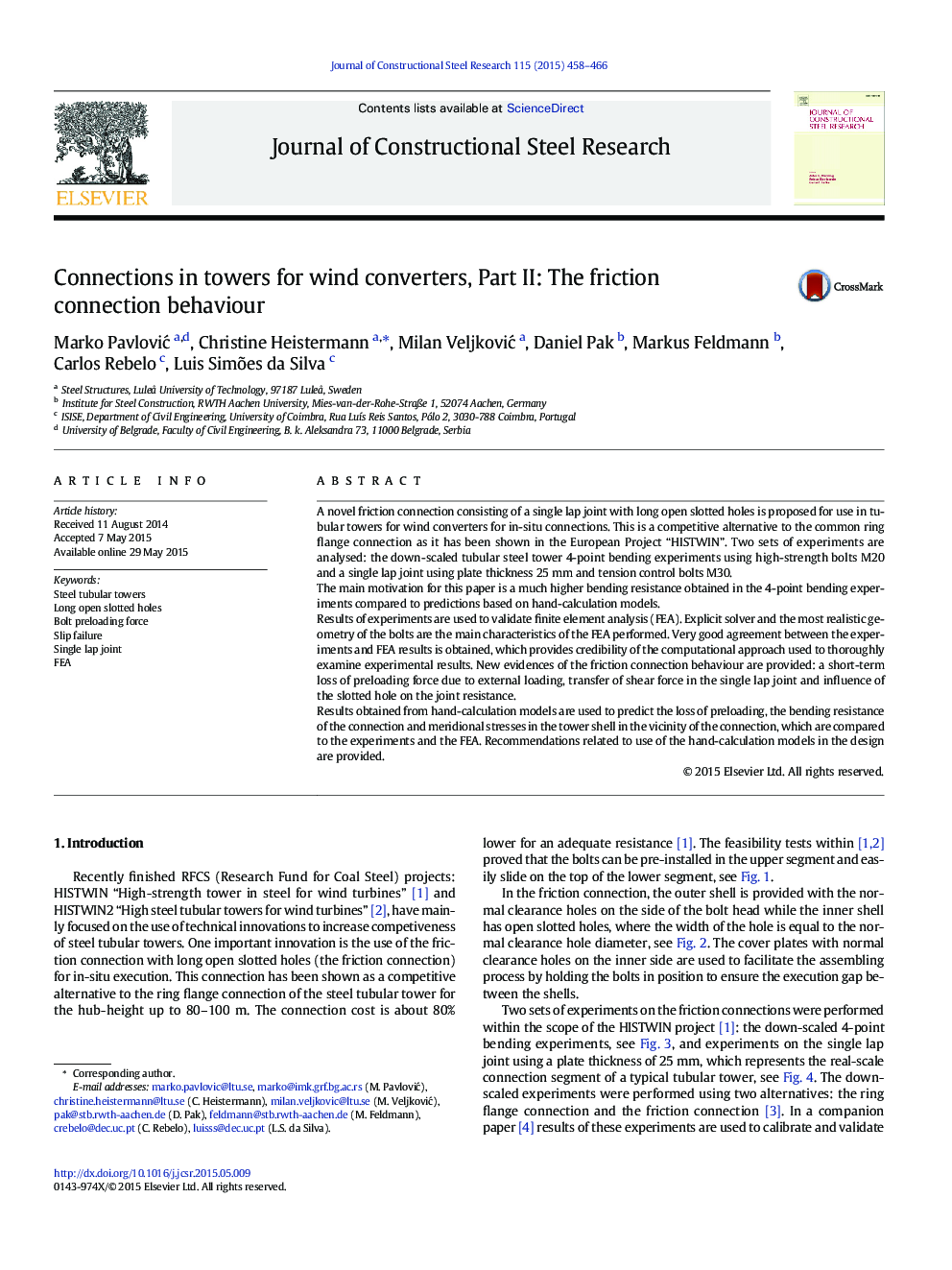| کد مقاله | کد نشریه | سال انتشار | مقاله انگلیسی | نسخه تمام متن |
|---|---|---|---|---|
| 284426 | 509145 | 2015 | 9 صفحه PDF | دانلود رایگان |
• Advanced FE analysis of the single lap joints with long open slotted holes
• Constant friction coefficient vs. pressure depended friction coefficient
• Thorough examination of assumptions and input data used in FEA
• Background for reduction factor due to oversized holes
• Recommendation for design of the friction connection in tubular towers
A novel friction connection consisting of a single lap joint with long open slotted holes is proposed for use in tubular towers for wind converters for in-situ connections. This is a competitive alternative to the common ring flange connection as it has been shown in the European Project “HISTWIN”. Two sets of experiments are analysed: the down-scaled tubular steel tower 4-point bending experiments using high-strength bolts M20 and a single lap joint using plate thickness 25 mm and tension control bolts M30.The main motivation for this paper is a much higher bending resistance obtained in the 4-point bending experiments compared to predictions based on hand-calculation models.Results of experiments are used to validate finite element analysis (FEA). Explicit solver and the most realistic geometry of the bolts are the main characteristics of the FEA performed. Very good agreement between the experiments and FEA results is obtained, which provides credibility of the computational approach used to thoroughly examine experimental results. New evidences of the friction connection behaviour are provided: a short-term loss of preloading force due to external loading, transfer of shear force in the single lap joint and influence of the slotted hole on the joint resistance.Results obtained from hand-calculation models are used to predict the loss of preloading, the bending resistance of the connection and meridional stresses in the tower shell in the vicinity of the connection, which are compared to the experiments and the FEA. Recommendations related to use of the hand-calculation models in the design are provided.
Figure optionsDownload as PowerPoint slide
Journal: Journal of Constructional Steel Research - Volume 115, December 2015, Pages 458–466
